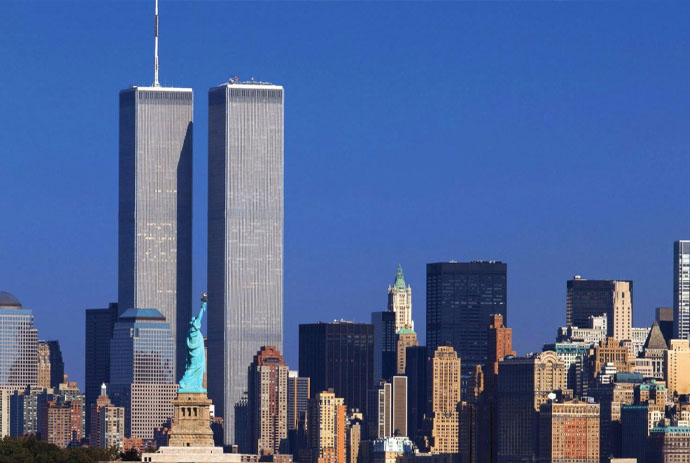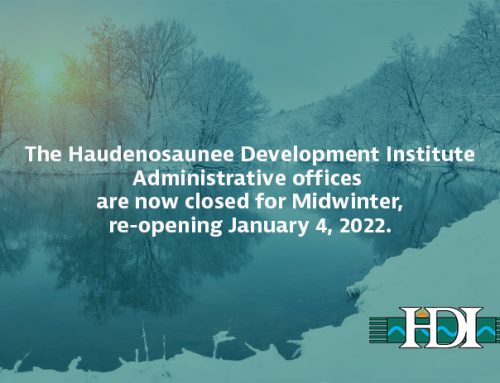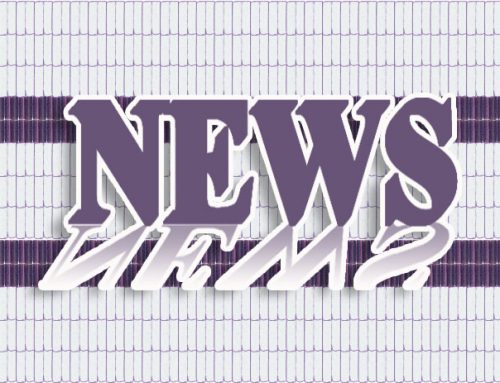by Leslie Logan
Seneca NationI watched a 20-year anniversary documentary about the Sept. 11 attacks on the Twin Towers last weekend. The New York City firefighters were the central focus. The film revisited the heroism of firefighters who were lost that day and firefighters who contracted terminal forms of cancer from having put in time at ground zero.
No disrespect to the many firefighters whose lives were lost on that fatal day — they walked into burning buildings in what they presumed was a rescue mission, when everyone else was going in the opposite direction, most never to be seen again. Their loss is tremendous and their stories heartbreaking. But ironworkers, including Mohawk ironworkers, also played a critical role after the collapse of the towers and through their stories, rose to heroics.
They were mentioned only once in the documentary.
Mohawk ironworkers were there, clearing the twisted iron and mountain of smoldering wreckage. My late husband, Brad Bonaparte, put in roughly 100 days on the pile. In the beginning, they hoped to remove debris and rescue people thought buried. But no bodies were found on his watch, only body parts and those were few and far between. It was an experience that haunted him. He told us at the time how respirators were in short supply and not changed out for days on end. The environment was a simmering stew, ripe with carcinogens and dangerous elements.
Eight years after the 2001 attacks on the Twin Towers, my Mohawk ironworker was taken out by an all-consuming, aggressive form of esophageal cancer — a cancer linked to his time at ground zero, breathing in the toxic aftermath.
Twenty years later and 11 years after the loss of my ironworker husband, there is no victim’s compensation settlement. I’ve never lobbied for one.
Over Easter weekend 2010, we went to New York City to meet with attorneys to discuss a potential settlement. Brad’s cancer was fully loaded: terminal, inoperable, and metastatic. The team of oncologists gave him a 2 percent chance of surviving a year; he got seven months. Every other week there was another irreversible, mounting development. His seven months were brutal: a devastating, progressive, agonizing downward spiral with no reprieve. In April we were on month five and he was rail thin and weak. There was a formula that calculated the award amount. They offered around $13,000 for the value of his life — to our face, in person.
I remember that moment. It was a long day. By this time, a tumor had taken hold in his back. He had a hard time sitting for extended periods of time. He was exhausted and needed to get out of the comfortable confines of the firm’s office.
The value attached to a life about to be cut short by a terrorist-induced biohazard was $13,000. He was offered crumbs for the dangerous exposure from clearing the rubble. I don’t know whether it was shock or defeat, but we said very little. We grimaced, smiled, and told them to keep it. We packed up our stuff and left.
The New York Post ran a two-page spread on compensation awards that featured Brad. The article illustrated the vast disparities in settlements and also featured a man with asthma, who cleaned the surrounding buildings, who would live and was awarded $250,000. Whatever went into the convoluted award equation made no sense. A few years later, after we lost him, the Victim’s Compensation Fund offered a little more. Somewhere around $35,000. Again, I said, “That’s ok, keep it.” I never argued or chased down a bigger number. And there was one more offer. The last offer was around $52,000 — another insult; I left the letter unanswered.
I raised two children on my own since his death. They were 8 and 11 at the time; they are 19 and 22 now. Their father has been gone out of their lives longer than he was in their lives.
Nearly nine years after the attacks, 9/11 still irrevocably changed our lives. My son was pierced through the heart by his father’s loss, stricken with a searing, debilitating grief so profound, he suffered from suicidal ideation. He was a walking raw and gaping wound that couldn’t make sense of things. He was hospitalized at one point after a particularly painful outburst and attempt. The thought of losing my son to unrelenting grief, in addition to losing his father, was more than a mother could bear.
We got through those difficult days, but I would often think, and even say out loud in desperate, heated moments, that I wished it was me who got the cancer. Brad was the fun one. He brought the light, the laughter, the levity. I was the enforcer, rule-maker, structure-keeper. I was the heavy. And I was left with a world that felt like all the air had gone out of the balloon and I had to keep it all together.
In the last weeks of Brad’s life things got harder and harder as he got skeletal-thin, bones protruding; weaker and weaker. I had a really clean car because I would go to the car wash just about every other day for scream therapy. Once inside the bay, windows rolled up and water pounding, I would allow my own waterworks to unfurl. I would scream loud and long until my throat was raw. I would bawl hard until I could barely catch my breath, and let it all out. The churning pads and gushing water would drown out my cries and nobody but me would be the wiser for the unleashing. And when the dryers shrieked and fired up I would pull myself together, wipe my eyes, take a deep breath, go back home and act like everything was going to be ok. To say watching him deteriorate was hard is an understatement.
We think about him every day, but there are several days throughout the year that we carve out ways to honor him, think hard about him, and allow the residual pain to take hold. Father’s Day is one of them because we returned his body to the earth on Father’s Day. Thanksgiving was rough for a number of years because we learned of his cancer diagnosis on the day before the holiday. And 9/11 is one of those days, because although we didn’t lose him to a building blown through by a plane or in one of the fatal crashes, we lost him as part of the collateral damage. The pain of his loss has subsided, but it is always there, a dull throb.
The kids and I have created a few rituals to keep his memory alive. We used to attach small notes to balloons — messages to him. We would go to the beach and let them go, watch them as long as we could until they were small dots in the sky and then disappeared into the clouds. We liked to believe that our messages, drifting skyward, would reach him in heaven or the Skyworld. We did this for years, but then the kids became environmentally conscious and we had to stop, acknowledging that the balloons were just ending up in waterways, adding to pollution. We now collect rocks and shale tablets and write messages to him in Sharpie and toss them in Lake Erie.
Although a couple of Native-directed documentaries have surfaced focusing on Mohawk ironworkers in the intervening years since the attacks, ironworkers are barely a footnote to the 9/11 tragedy and the 20-year remembrances.
There is no wall paying tribute to ironworkers. There is no marble in which their names are inscribed that we can run our fingers over. There is no eternal flame that burns in their memory. There is no fountain for them into which we can toss our penny wishes. And for us, there has never been a settlement. There has never been an adequate value, no computation put forth for our loss, and there never will be an adequate value; the loss is incalculable. Our lives, like so many others, were changed forever by the terrorist attacks.
Mohawk ironworkers helped build the Twin Towers and Mohawk ironworkers helped clear the massive debris when the towers came down. Mohawk communities and families like ours intimately feel, know, and acknowledge the ironworker’s sacrifices and contributions. We will always remember and keep their spirits alive. We will keep telling their stories and never stop celebrating their lives. I just wish mainstream America also took a moment to remember and acknowledge the significance of the ironworker’s role in the 9/11 story these 20 years later.
For Brad Bonaparte’s family and his children up in Akwesasne and down on the Cattaraugus territory, Sept. 11 will always serve as a reminder of his sacrifice.
We will always remember him as our hero, even if the vast majority of ironworkers remain the unsung heroes of 9/11.
Leslie Logan, Seneca, is a freelance writer residing on the Cattaraugus Territory of the Seneca Nation. She has contributed to Indian Country Today, American Indian, Native Voices, Indigenous Woman, and several anthologies. She sits on the board of the National Native American Hall of Fame.







